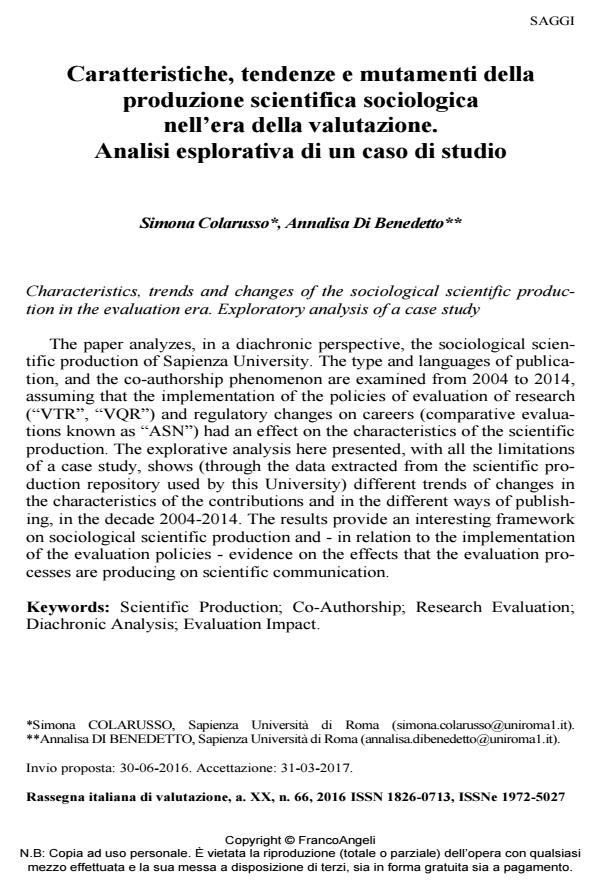Characteristics, trends and changes of the sociological scientific production in the evaluation era. Exploratory analysis of a case study
Journal title RIV Rassegna Italiana di Valutazione
Author/s Simona Colarusso, Annalisa Di Benedetto
Publishing Year 2017 Issue 2016/66
Language Italian Pages 19 P. 120-138 File size 478 KB
DOI 10.3280/RIV2016-066008
DOI is like a bar code for intellectual property: to have more infomation
click here
Below, you can see the article first page
If you want to buy this article in PDF format, you can do it, following the instructions to buy download credits

FrancoAngeli is member of Publishers International Linking Association, Inc (PILA), a not-for-profit association which run the CrossRef service enabling links to and from online scholarly content.
The paper analyzes, in a diachronic perspective, the sociological scientific production of Sapienza University. The type and languages of publication, and the co-authorship phenomenon are examined from 2004 to 2014, assuming that the implementation of the policies of evaluation of research ("VTR", "VQR") and regulatory changes on careers (comparative evaluations known as "ASN") had an effect on the characteristics of the scientific production. The explorative analysis here presented, with all the limitations of a case study, shows (through the data extracted from the scientific production repository used by this University) different trends of changes in the characteristics of the contributions and in the different ways of publishing, in the decade 2004-2014. The results provide an interesting framework on sociological scientific production and - in relation to the implementation of the evaluation policies - evidence on the effects that the evaluation processes are producing on scientific communication.
Keywords: Scientific Production; Co-Authorship; Research Evaluation; Diachronic Analysis; Evaluation Impact.
Simona Colarusso, Annalisa Di Benedetto, Caratteristiche, tendenze e mutamenti della produzione scientifica sociologica nell’era della valutazione. Analisi esplorativa di un caso di studio in "RIV Rassegna Italiana di Valutazione" 66/2016, pp 120-138, DOI: 10.3280/RIV2016-066008